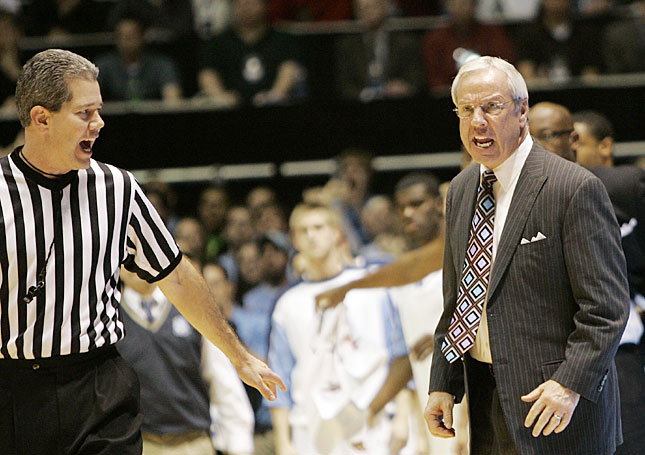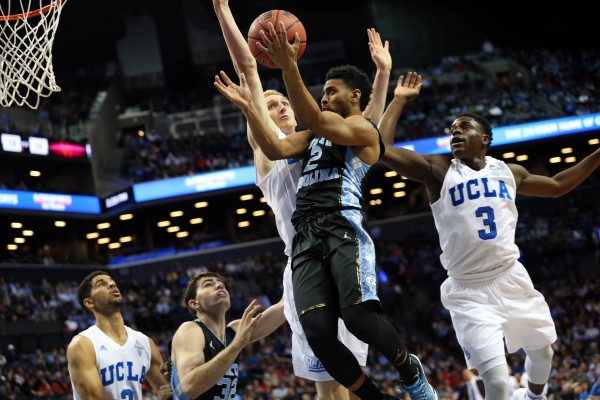Can North Carolina’s Offense Compensate for Its Porous Defense?
Posted by Justin Kundrat on December 22nd, 2015Free throws, threes, layups and dunks — the distance or form didn’t matter. For much of the second half in Saturday’s game against UCLA, it felt like North Carolina couldn’t miss. And for a crucial six-minute stretch late in the second half, it didn’t. The Tar Heels made 11 consecutive field goals, during which its lead ballooned from five to 16 points. From there, Roy Williams‘ veteran team put the Bruins in the rear view mirror and never looked back. For opponents that have never experienced the frenzy of North Carolina’s offense, the task of slowing it down once it gets rolling can be daunting, and UCLA was only the latest victim to conveniently fall into this trap. Still, for a team that blew the doors off of another quality opponent, questions linger about the quality and legitimacy of the Tar Heels’ defense.
The North Carolina offense is humming. The Heels boast seven players averaging more than eight points per game and rank second nationally in offensive efficiency. But a heavy reliance on an uptempo attack to generate all those points comes with the caveat that their two losses this season came against teams that are among the slowest in college basketball. Texas and Northern Iowa like to slow down the pace, and both have experienced guards who manage to limit turnovers, and hence, the overall number of possessions. As such, North Carolina stands at 8-0 this season in games with 70 or more possessions and is 1-2 in games where it failed to reach that threshold. While its offense is averaging a robust 14.6 seconds per possession, its defense is using 18.8 seconds per possession — one of the 10 slowest teams nationally. In other words, North Carolina is spending an inordinate amount of time in its games laboring away on the defensive end.
There are two primary issues at hand. First, North Carolina’s defense has not been particularly adept at forcing turnovers. While this has not necessarily been a key characteristic of many recent Williams teams, it is a reasonable concern given that opponents can take their time to find open looks against a team that allows a pedestrian 49.8 percent effective field goal rate (UNC’s lowest since 2004). Secondly, the foul-prone nature of the team’s big men and the guards’ corresponding shortcomings in containing dribble penetration have meant that success has become overly predicated on the functionality of its offense. Williams knows this, and so does senior Brice Johnson, noting that the team is actively working to improve its semi-porous defense. “We just got to do it as a team,” he said. “Everyone has to take their individual role and be responsible for what they’re doing.”

For Roy Williams and company, while still very much a top contender, there are some items to work out before March. (AP)
When the Heels’ offense is clicking, most opponents won’t be able to score enough to keep up and win. But the most successful North Carolina teams under Williams also featured strong defensive players across multiple positions. The 2005 National Championship team featured Sean May manning the middle as a rebounding force while Raymond Felton generated a couple steals per game and Jackie Manuel guarded the wings. In 2008 and 2009, it was Tyler Hansbrough playing the role of enforcer inside while Ty Lawson pressured ball-handlers and Danny Green shut down the shooters. This year’s team has several decent defenders, but from a team perspective it gives up far too many easy buckets. While it is true in basketball that a great offense will often beat a great defense, Roy Williams’ best teams at North Carolina have been proficient in doing both. The Heels, the preseason #1 team in both major national polls, have just over two months left to figure it out.











































